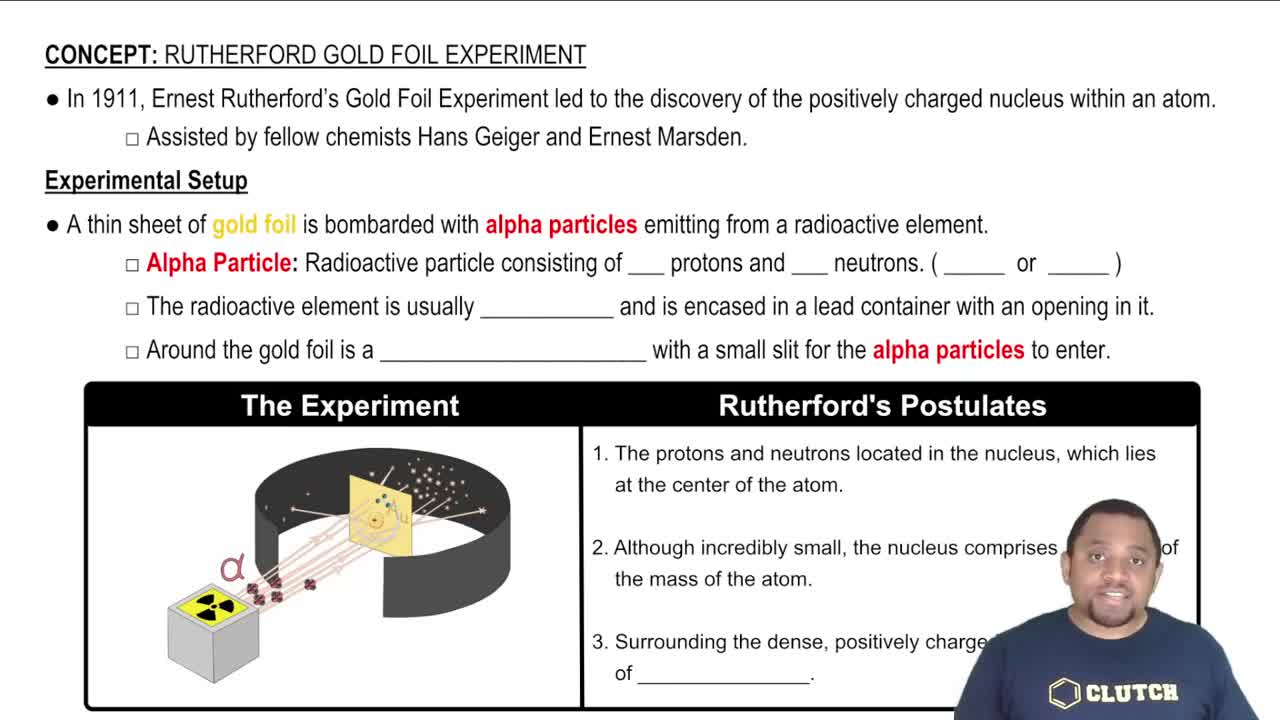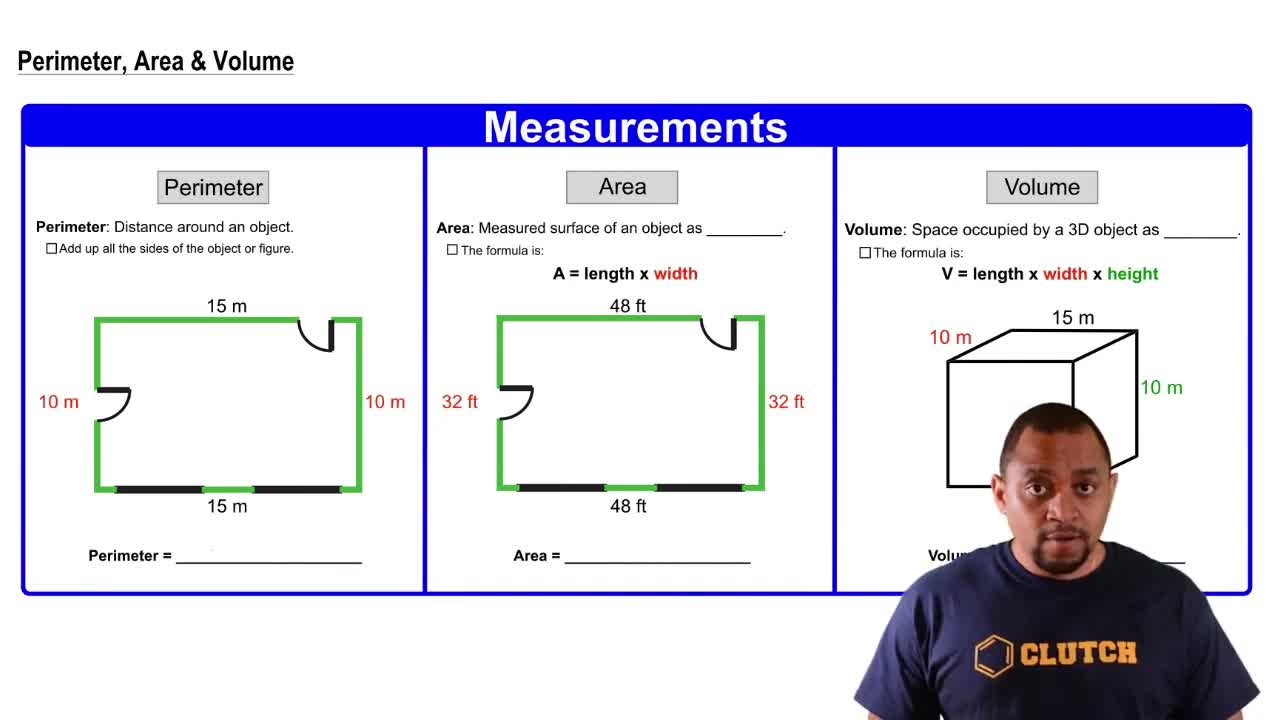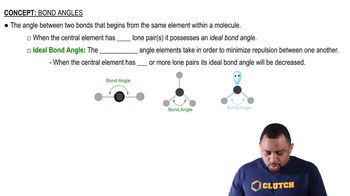
What fraction of the a particles in Rutherford's gold foil experimentare scattered at large angles? Assume the gold foilis two layers thick, as shown in Figure 2.9, and that the approximatediameters of a gold atom and its nucleus are 270pm and 1.0 * 10–2 pm, respectively. Hint: Calculate the crosssectional area occupied by the nucleus as a fraction of thatoccupied by the atom. Assume that the gold nuclei in eachlayer are offset from each other.
 Verified step by step guidance
Verified step by step guidance
Verified video answer for a similar problem:
Key Concepts
Rutherford's Gold Foil Experiment

Cross-Sectional Area

Scattering Angles

An unknown particle is caused to move between two electrically charged plates, as illustrated in Figure 2.7. You hypothesize that the particle is a proton. (a) If your hypothesis is correct, would the particle be deflected in the same or opposite direction as the b rays?
An unknown particle is caused to move between two electrically charged plates, as illustrated in Figure 2.7. You hypothesize that the particle is a proton. (b) Would it be deflected by a smaller or larger amount than the b rays?
Millikan determined the charge on the electron by studying the static charges on oil drops falling in an electric field (Figure 2.5). A student carried out this experiment using several oil drops for her measurements and calculated the charges on the drops. She obtained the following data: Droplet Calculated Charge (C) A 1.60 * 10-19 B 3.15 * 10-19 C 4.81 * 10-19 D 6.31 * 10-19 (b) What conclusion can the student draw from these data regarding the charge of the electron?
Millikan determined the charge on the electron by studying the static charges on oil drops falling in an electric field (Figure 2.5). A student carried out this experiment using several oil drops for her measurements and calculated the charges on the drops. She obtained the following data: Droplet Calculated Charge (C) A 1.60 * 10-19 B 3.15 * 10-19 C 4.81 * 10-19 D 6.31 * 10-19 (c) What value (and to how many significant figures) should she report for the electronic charge?
The radius of an atom of tungsten (W) is about 2.10 Å. (c) If the atom is assumed to be a sphere, what is the volume in m3 of a single W atom?
